February 15, 2021
By Steve Cary
But first, a big “THANK YOU” to Bryan Reynolds for his fun and informative mid-winter posts. I’m learning a lot from him and hope to team up with him on some future stories as we go along.
Here in New Mexico’s mid-continent, mid-latitude setting, all resident life forms including butterflies have ways to deal with challenging times. Winter, for example, is cold enough (regular sub-freezing temperatures), long enough (few to several months), and predictable enough (annual) to effectively sort adapted from non-adapted creatures. Can’t get through a long, cold winter? Then you don’t live here on a permanent, resident basis.
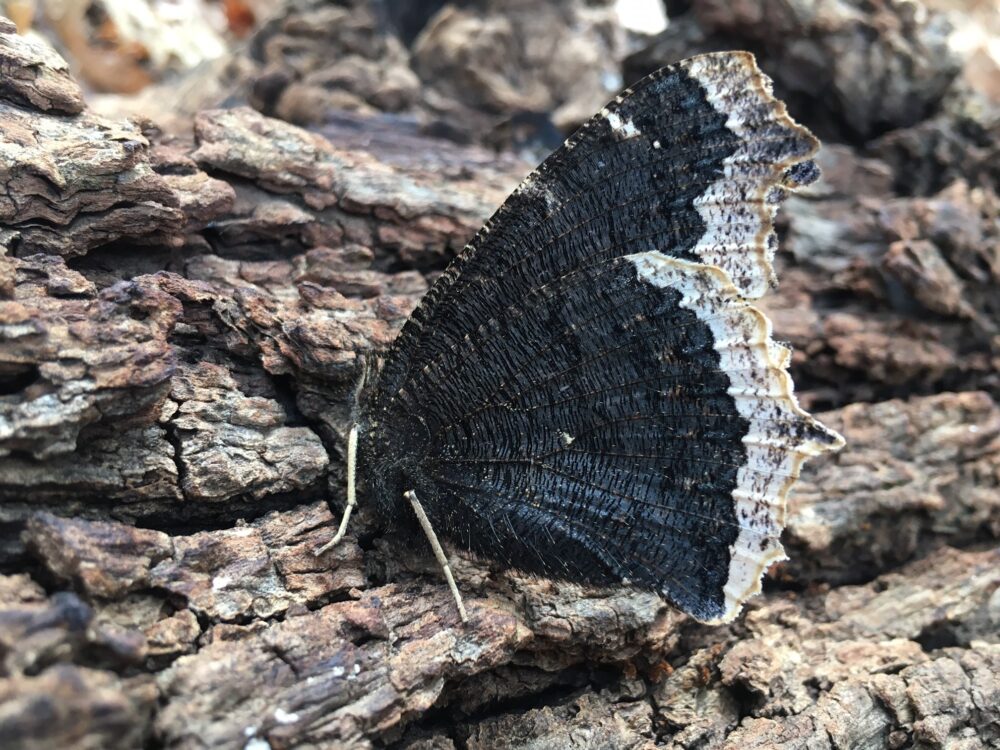
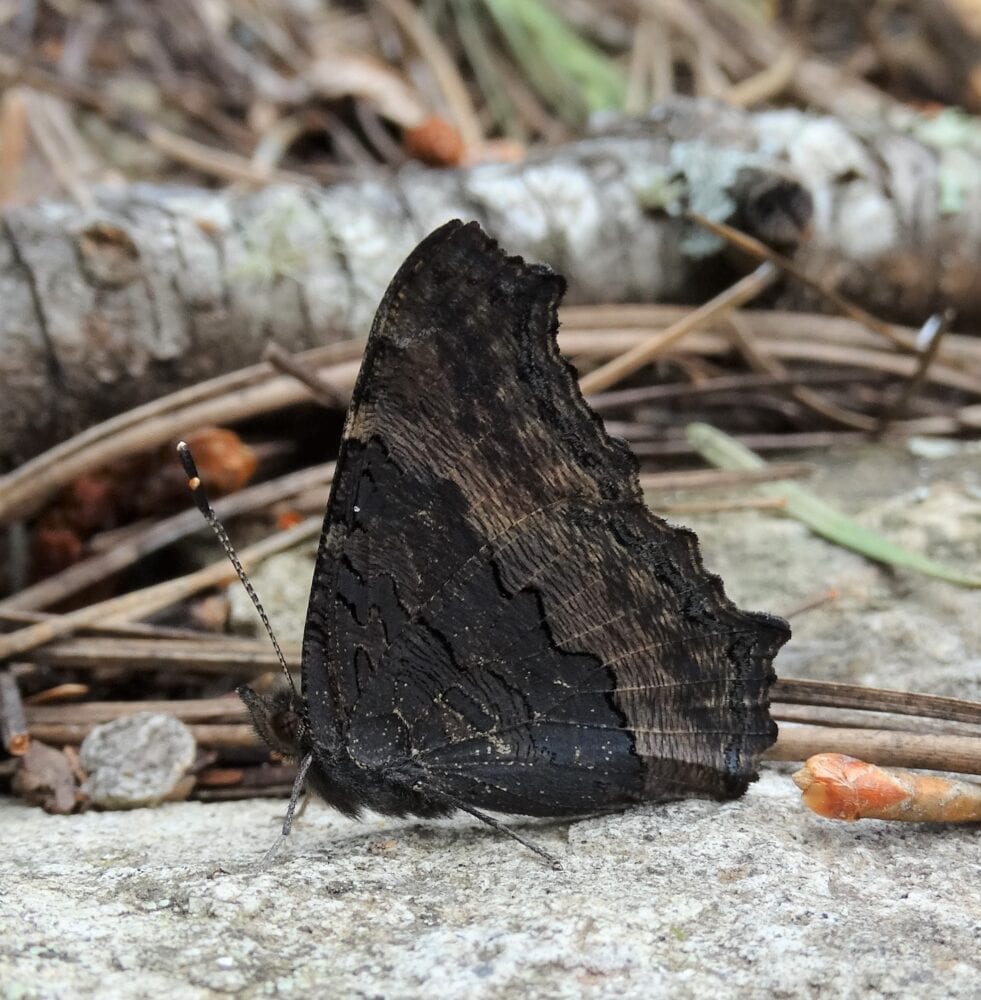
Each of our resident butterflies has a plan to survive winter. Those plans boil down to being (a) dormant (inactive) because there is no food for any life stage and (b) able to tolerate long periods of sub-freezing temperatures. By converting internal fluids to glycols they prevent tissue damage in extreme cold — that’s a pretty nice adaptation. Some butterfly species pass winter as eggs, some as partially grown larvae, others as chrysalids, and a few as adults. For each species the timing of the life cycle seems to be anchored by the needs of their caterpillars. The larval stage needs to be present when larval hostplants are the most edible and nutritious; everything else is arranged around that fundamental requirement.
Science aside, the notion of hibernating butterflies is somewhat of a head-scratcher because they seem so fragile and delicate to us burly, exothermic mammals. If I take time to think about it, however, it’s a no-brainer. Almost everything living here is either dormant or migratory, right? Most plants are dormant over winter and almost every animal species, at least the endothermic (cold-blooded) ones, either moves away for winter or undergoes dormancy to stay put. Monarch and Painted Lady are butterflies that exemplify the migratory solution to winter. All other resident butterfly species become dormant and stick around. (True, there is a third category: dozens of subtropical wandering species are frozen out and simply must re-colonize when able.)
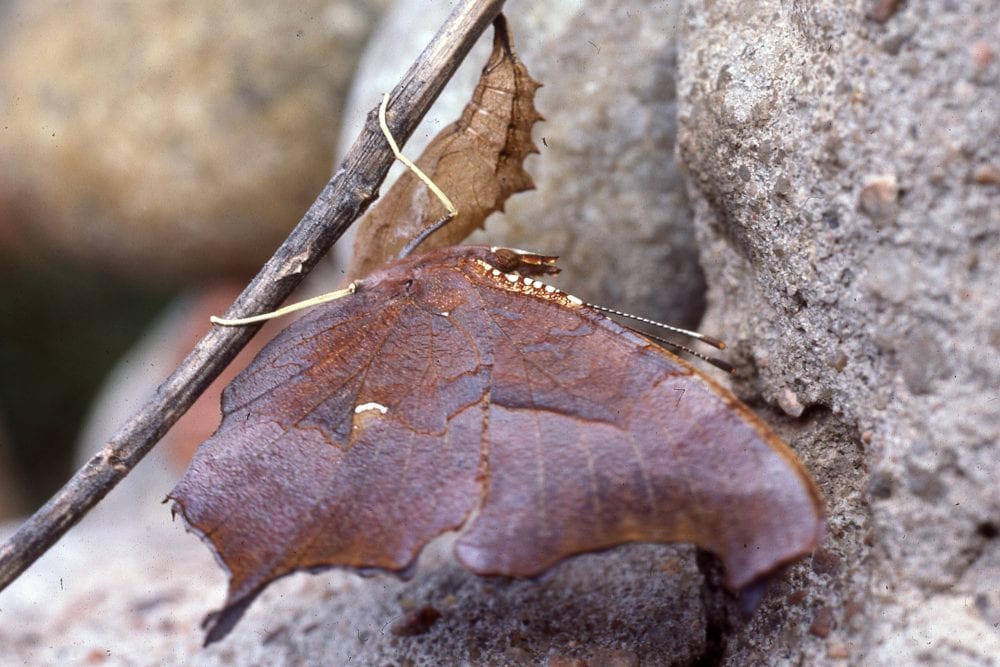
Among our 200+ species of native butterflies that are dormant over winter, in one life stage or another, only a handful hibernate as adults. This group consists almost entirely of True Brushfoots (Nymphalidae: Nymphalinae) in the group that includes tortoiseshells and the ‘punctuation-mark’ butterflies, plus our only resident leafwing (Nymphalidae: Charaxinae). These adult hibernators usually complete two generations per year. Offspring of the summer brood emerge from chrysalids in late summer or autumn, immediately enter reproductive diapause, prettify autumn landscapes for a few weeks, then hide and hunker down through winter.
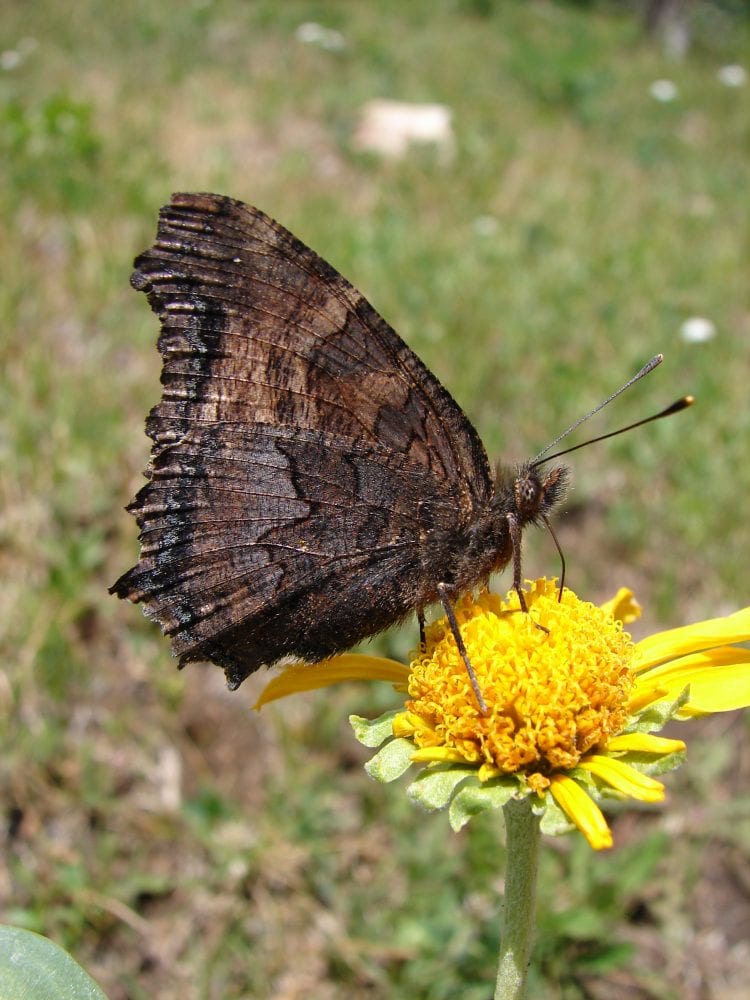

As we now pass mid-February, warming temperatures and lengthening days of late winter and early spring will have their inexorable affect. In our mountains, Mourning Cloaks are almost always the first butterfly to fly in the new year. Single individuals often are seen on the occasional mild day in January, then more often in warming February. Our first sighting this year was in the Sacramento Mountains (Otero County) on January 5, 2021, as reported by Mark Meyers (see his photo above).
Why do so few of our butterfly species overwinter as adults? Granted, there is the larval hostplant ‘prime directive,’ but it also must be a huge challenge for adult butterflies to avoid predation while hibernating for several months. Think of all the hungry birds, small mammals, and even spiders that stick around through winter, need to eat daily, and might forage for hours to find what they need. Of course, hibernating butterflies in all life stages are immobile in the cold and completely at the mercy of circumstances, but eggs, larvae, and chrysalids are smaller and more frequently camouflaged for survival compared to the imago, or adult stage, which has comparatively large wings designed in part to attract the attention of potential mates. That could very well work against them in winter, when adult butterflies that are not adequately hidden are likely to get gobbled.
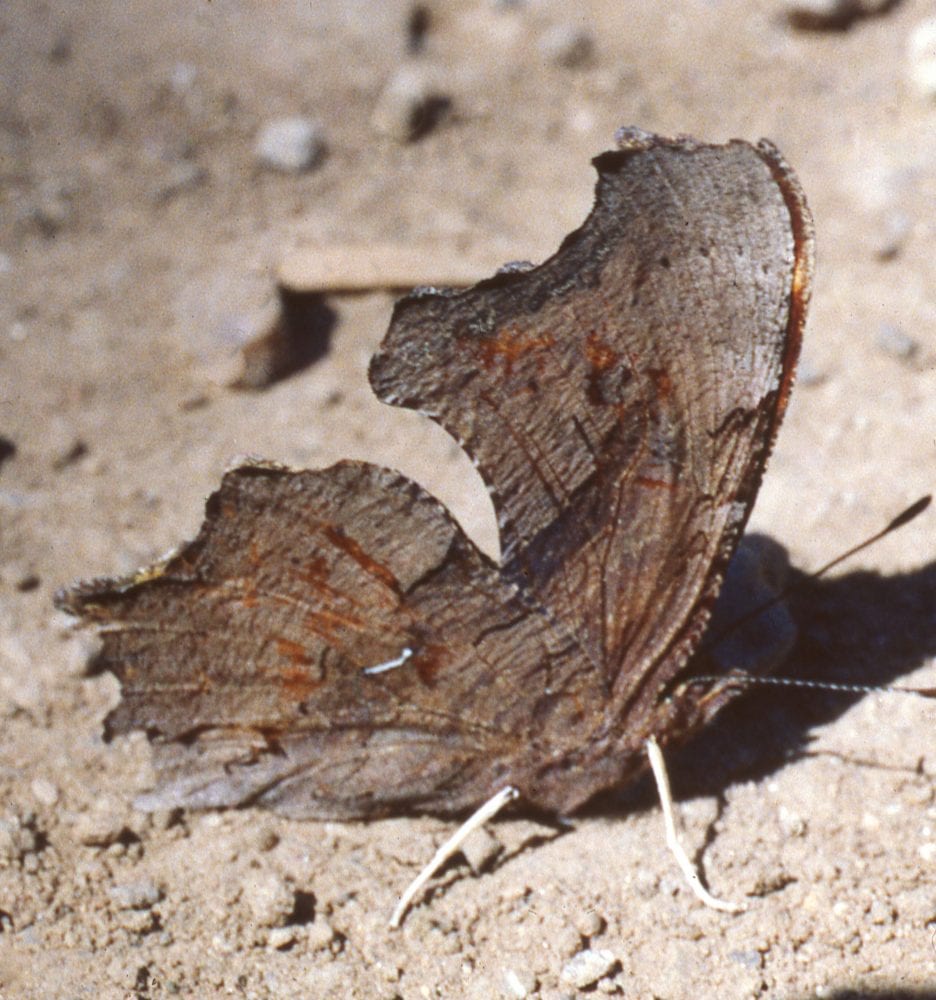
When one imagines the resulting natural selection pressure on the appearance of hibernating adult butterflies, it is not surprising that our adult hibernators display truly amazing camouflage. With wings closed, each species bears a distinct resemblance to either rough tree bark or dead leaves, which comprise much of butterfly habitat in winter. Wing edges are irregular and rough-edged, by design. Colors vary from black to brown and gray to tawny. Various Polygonia species mimic dead leaves, even presenting the illusion of an apparent hole or tear or insect feeding damage in the form of a translucent comma or “?” not unlike many actual dead leaves. Sprinkled throughout this post are images of our butterflies that hibernate as adults. As you scroll through this article, think about which species have gone for the gnarled tree bark disguise and which for the dead leaf disguise. Do any look edible?

By March and April, lured out by regular warmth, surviving Mourning Cloaks emerge from hiding and eagerly get about the business of reproduction. By then they are several months old and often they show it. After mating is complete, many will be worn and tattered, like the individual below.
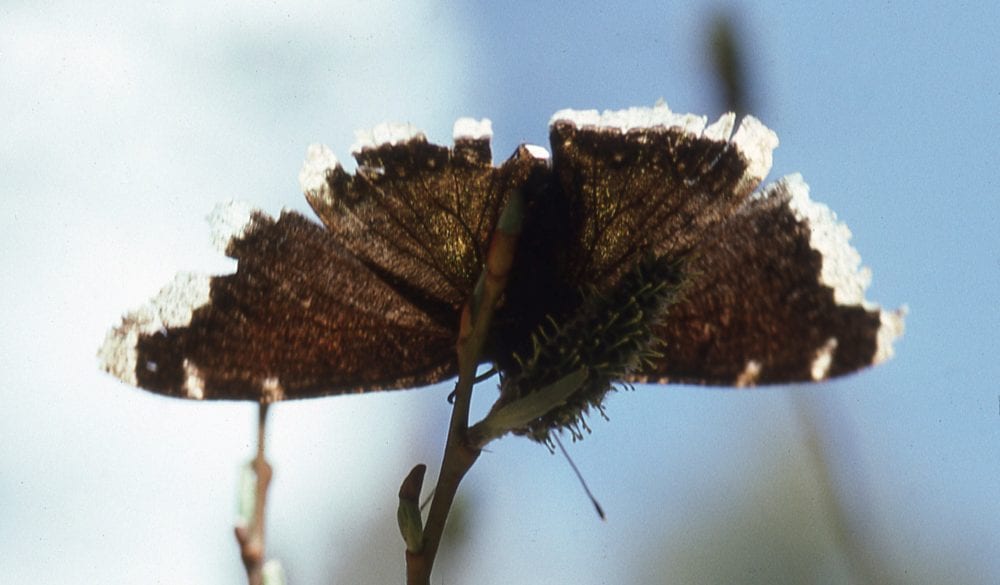
Hibernating Commas usually appear a little later in spring than Mourning Cloaks, but a lot depends on the year and the circumstances (e.g., elevation, exposure) of the hibernation site. Below is a list of adult hibernators and their earliest documented sightings in New Mexico to date:
- Milbert’s Tortoiseshell: March 6
- Mourning Cloak: January 5
- California Tortoiseshell: February 26
- Goatweed Leafwing: March 3
- Question Mark: February 10
- Satyr Comma: January 23
- Hoary Comma: March 16
- Green Comma: April 5
Perhaps in your 2021 spring butterfly rambles you might document some earlier dates for these species. If you see any of them this spring, keep in mind their months-long snooze, at once remarkable and routine, now at an end. Their offspring will fly in summer, and their grandchildren are destined to hibernate over the coming winter of 2021-2022.
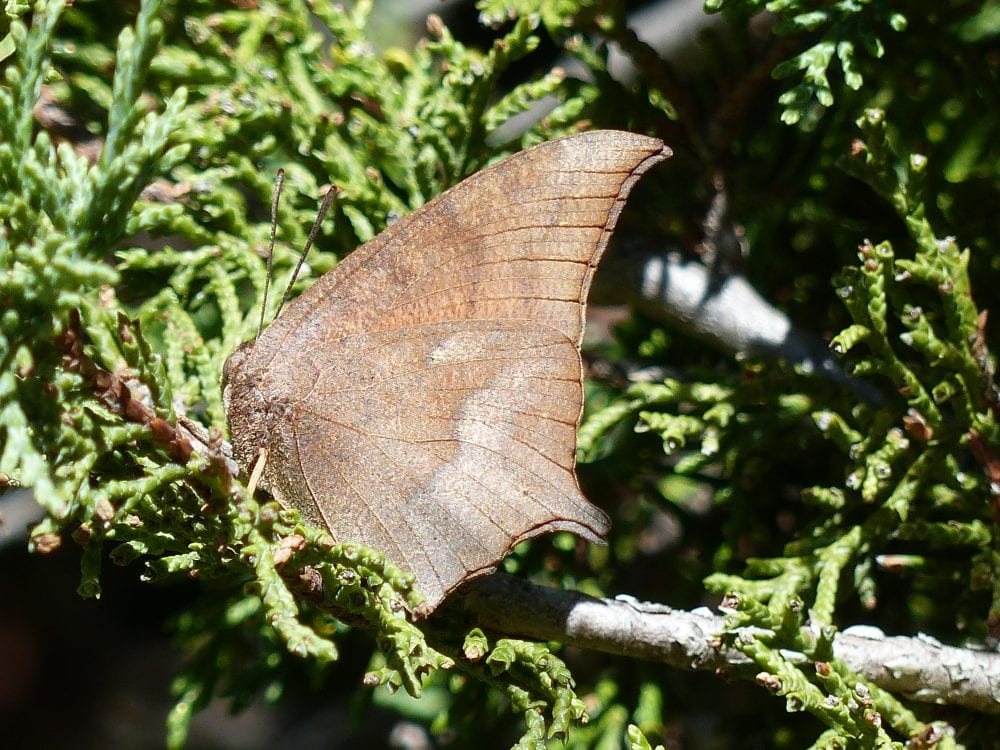
Butterflies of New Mexico Update: Over the past three and half months I reviewed all 300+ species entries on the Butterflies of New Mexico web pages and tuned them up as best I could. I updated taxonomy and nomenclature. I tidied up images where I could, added some new ones, replaced some scratchy old ones, cleaned up scans of old slides.
As a result of that top-to-bottom review, I developed a brief “want” list of species for which I have no photos whatsoever: Broad-Banded Swallowtail (Heraclides pallas), Yellow Angled-Sulphur (Anteos maerula), Stanfords’ Blue (Euphilotes stanfordorum), Pale Dotted-Blue (Euphilotes pallescens), Silver Emperor (Doxocopa laure), Dingy Purplewing (Eunica monima), Great Basin Wood-Nymph (Cercyonis sthenele), Drusius Cloudywing (Cecropterus drusius), Scudder’s Duskywing (Gesta scudderi), Sunrise Skipper (Adopaeodes prittwitzi), and Viola’s Giant-Skipper (Megathymus violae).
Most of these are scarcely seen in New Mexico, hence my lack of photos. I’ll be delighted to illustrate these species with good photos from wherever you have them. And of course there are many other species for which better images would be very nice to have. Have you any we may use? If so, please contact me here: sjcary@centurylink.net.
Additional “Rites of Spring” posts are in the works, covering topics including spring migrants (Monarchs and Painted Ladies), spring florivore hairstreaks like Sandia Hairstreak and Henry’s Elfin, then those frisky, hilltopping desert whites (Desert Orangetip, Desert Marble and others). I’ll develop the posts as time goes along; I hope to get to them all. Eventually we will get to the Azures of Spring and perhaps another photography adventure tale from Bryan “Mud” Reynolds. Other topics are in the works as well . . .
Now that we are coming to the end of winter, the entire 2021 butterfly season beckons with ideas, plans, adventures and possibilities. This year, however, the continuing, intensifying drought does not bode well. You might go out, look around and see nothing, but there’s no doubt at all about what you’ll see if you stay home.
Warm wishes for the coming weeks. Stay safe, get vaccinated when you can, and I hope we all soon get a large but manageable dose of precipitation.

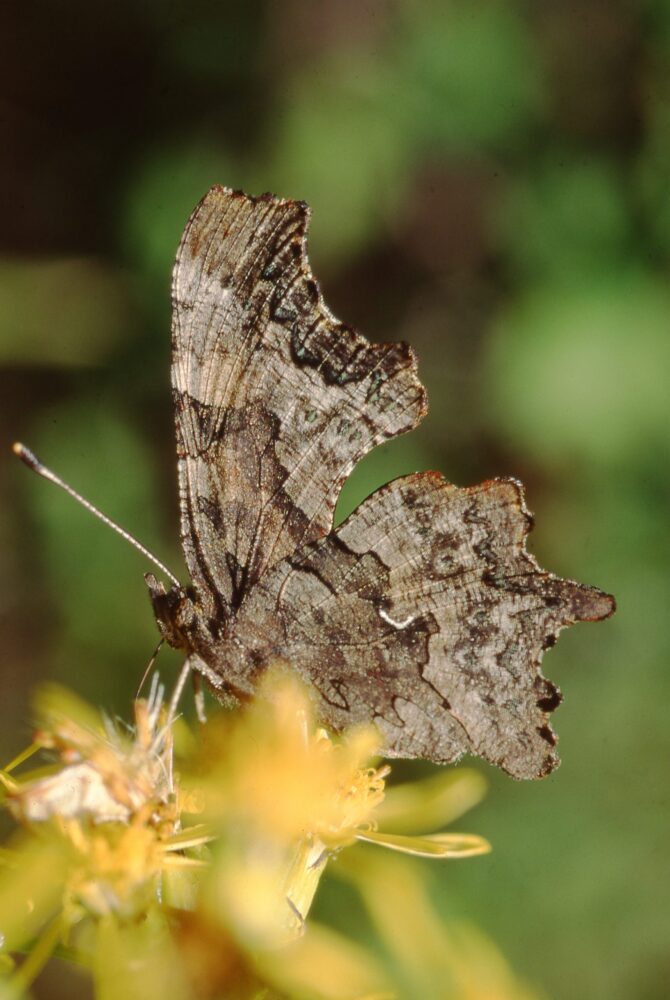
question mark above doesn’t have the dot under the “comma”. How come?
thanks for noticing that, Chick. I would estimate that perhaps 10% lack the dot, so I’d call it part of the normal variation in markings for that species.
It is very optimistic article .The pictures are fascinating even when they all are closed wings mingling with the surroundings. To me it is very intriguing and an eye opener how nature tries to keep the species to continue !
I do see Hoary Commas in April.
Thank you for your dedication and All the best.
Very nice Steve. Thank you.
I was surprised at the earliest sightings of the adult hibernators. Those few seen in early January must be hearty beasts!
I concur, john, heartier than me anyway!
Another wonderfully illustrated and informative post. Thanks, Steve. I’m a little disappointed that I haven’t seen a Mourning Cloak yet this year. I usually have a very early one as I dig into the woodpile up at my place in the hills.
Fascinating, Steve. I learned a lot from this.
thank you, Dale, glad you enjoyed :^)
I saw a Mourning Cloak on March 5th, 2021 in Albuquerque. There are almost no flowers blooming though, what is their food source if you are seeing them in January, or as I have, in early March? What are they laying eggs on when it is still cold? Is there a mismatch between when they are appearing and when their nectar and host plants are available?
Steph, thanks so much for excellent questions. I think mourning cloaks come out of hibernation strictly on the basis of warm temperatures. Those warm temps are no guarantee of flower nectar, as our ongoing drought will demonstrate, but they usually coincide with resumption of plant growth after winter dormancy. Also, I think the cloaks’ typical creekside habitat in NM is relatively protected from drought. I do wonder whether surviving hibernators actually need to feed, or if they retain enough reserves from autumn to simply get about the business of finding mates. Certainly their occasional January or February flight is but a brief “woohoo” until cold closes back in, and no nectar is no problem. When temps become more consistently warm and cloaks become more consistently active, then the need for nectar might become more pressing. Females will oviposit on willows so their hatchlings can munch the nutritious first growth of spring. I doubt that an occasional light frost would be a problem for springs eggs or larvae, but a very nasty cold snap could be a problem. I’m sure there are occasional mismatches such as you describe, with individual fatalities. That the species as a whole persists is persuasive evidence that they have a system that generally works well. Now we just need to understand it :^)